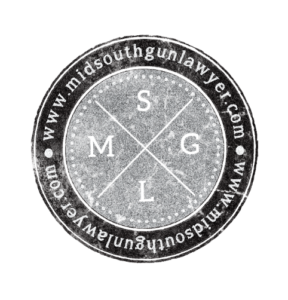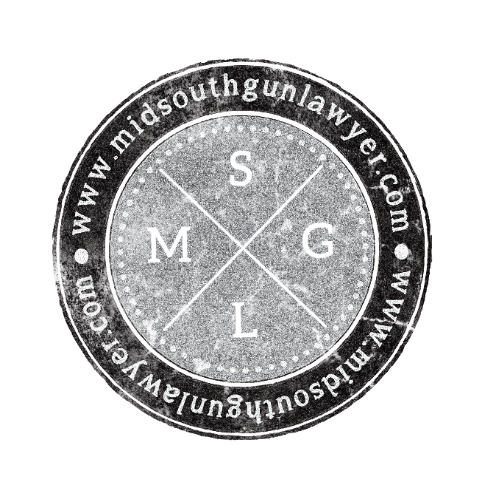TITLE I FIREARMS AND THEIR REGULATION
A. Modern Firearms, Curios and Relics, and Antiques – Important Definitions
“Modern firearms” are those manufactured after 1898 which do not use blackpowder or fixed cartridges. Most are match, wheel-lock, flintlock, or percussion cap models. Since most firearms of this era were not date stamped, proof marks from the manufacturer are the most common way age is established. Proof marks vary greatly in shape, detail, and specificity.
Modern firearms can roughly be divided into three different categories: handguns, rifles, and shotguns. “Handguns” or “pistols” include revolvers, semi-automatic pistols, and single shot pistols. The main distinction between a handgun and a rifle or shotgun is not the ammunition or overall length but rather the design of the firearm to be fired from the hand rather than from the shoulder.[1] Rifles are defined by 18 U.S.C. § 921(a)(7) as “a weapon designed or redesigned, made or remade, and intended to be fired from the shoulder and designed or redesigned and made or remade to use the energy of an explosive to fire only a single projectile through a rifled bore for each single pull of the trigger.” Shotguns are defined as “a weapon designed or redesigned, made or remade, and intended to be fired from the shoulder and designed or redesigned and made or remade to use the energy of an explosive to fire through a smooth bore either a number of ball shot or a single projectile for each single pull of the trigger.”[2] The primary difference between a rifle and shotgun is the use of rifled vs. smooth bore. A rifled barrel allows for much greater accuracy and range while a smooth bore allows for multiple projectiles useful for activities such as bird hunting or shooting moving targets. Rifles and shotguns employ numerous loading methods including: semi-automatic; pump; lever; bolt; etc.
“Curios and relics” “have special value to collectors because they possess some qualities not ordinarily associated with firearms intended for sporting use or as offensive or defensive weapons. To be recognized as curios or relics, firearms must fall within one of the following categories:” a) non-replicas manufactured at least fifty years prior to the present date; b) be certified by the curator of a municipal, state, or federal museum which exhibits firearms to be curios or relics of museum interest; or c) any other firearm which derives a substantial portion of its monetary value from its novelty, bizarreness, or because it is associated with some historical person, period, or event.[3] A special curios and collector’s license is available from the ATF to allow a person to acquire such firearms (only such firearms) in interstate commerce.[4] “Transfers of curio or relic firearms by licensed collectors are not subject to the requirements of the Brady law [nor must a FFL use a form 4473]. It is, however, unlawful to transfer a firearm to any person knowing or having reasonable cause to believe that such person is a felon or is within any other category of persons prohibited from receiving or possessing firearms.”[5]
“Antique” firearms are defined in 18 U.S.C. § 921(a)(16) as:
(A) any firearm (including any firearm with a matchlock, flintlock, percussion cap, or similar type of ignition system) manufactured in or before 1898; or (B) any replica of any firearm described in subparagraph (A) if such replica – (i) is not designed or redesigned for using rimfire or conventional centerfire fixed ammunition, or (ii) uses rimfire or conventional centerfire fixed ammunition which is no longer manufactured in the United States and which is not readily available in the ordinary channels of commercial trade; or (C) any muzzle loading rifle, muzzle loading shotgun, or muzzle loading pistol, which is designed to use black powder, or a black powder substitute, and which cannot use fixed ammunition. For purposes of this subparagraph, the term “antique firearm” shall not include any weapon which incorporates a firearm frame or receiver, any firearm which is converted into a muzzle loading weapon, or any muzzle loading weapon which can be readily converted to fire fixed ammunition by replacing the barrel, bolt, breechblock, or any combination thereof.
See the BATFE FAQ for specifics on what is and is not an “antique firearm.”[6]
B. Purchasing Requirements
The requirements to purchase a firearm vary widely based upon the state in which you live and whether you are purchasing from a federally licensed dealer (FFL). In Mississippi, to purchase within the state from another Mississippi resident there are no mandatory forms to complete or background checks to perform. Mississippi law prohibits the transfer of deadly weapons to persons under the age of eighteen (§ 97-37-13) and federal law prohibits transfer to some out-of-state residents (18 U.S.C. § 922(a)(5)). This author suggests that the seller “trade paper” with the buyer, essentially requiring the buyer to show proof of residence and age as well as sign a certification that the buyer is not prohibited from purchasing or owning the firearm. The seller would also be well advised to retain a record of the date of the transaction, purchase price, firearm make, model and serial number, and the name of the buyer. The seller has no duty to perform an independent investigation of the buyer’s representations. In trades, both parties should “trade paper” of this sort.
Purchases from FFLs are more strictly regulated and require a NICS (Brady) background check on a form 4473.[7] Rifles and shotguns can be purchased from a FFL outside the purchaser’s home state but handguns, at least until recently, must be purchased in the purchaser’s home state. In the February 11, 2015 case of Mance v. Holder,[8] the interstate handgun purchasing ban was held to violate the United States Constitution because the law was not “narrowly tailored to be the least restrictive means of achieving the Government’s goals under current law.” Important to the outcome was the implementation of NICS checks since the law’s original passage.
C. Form 4473
BATFE form 4473 is to be filled out by purchasers of handguns, rifles, or shotguns from FFLs, but not from individuals.[9] The form asks a number of questions taken from the penal code to determine whether the purchaser is a prohibited person. While the form 4473 must be completed by everyone, those with a state-issued concealed carry license issued following a background check need not have their form “called in” to the NICS database. A sample of the form is available on the BATFE’s website.[10]
D. Multiple Handguns and Form 3310.4
ATF Form 3310.4 “Report of Multiple Sale or Other Disposition of Pistols and Revolvers” is to be used when someone purchases two or more handguns within five days of each other.[11] Designed to detect illegal activity, namely straw purchasing, a similar form (Form 3310.12)[12] has also been required for rifles and shotguns in certain border states (Arizona, California, New Mexico, and Texas) since August 2011. The completed form “must be submitted to the National Tracing Center no later than the close of business on the day the multiple sale or other disposition took place”[13] and a second copy to the “designated State police or the local law enforcement agency in the jurisdiction where the sale took place.”[14]
E. Private Party Transfers and Gun Show Purchases
As discussed above in section (B), private party transfers in Mississippi do not require background checks or the completion of paperwork. The age and state of residence of the purchaser should be determined and, of course, the sale suspended if the seller suspects the purchaser is underage, from out of state, or is otherwise a prohibited person. Other states may have significantly greater restrictions on private transfers.
The key distinction between a private party and a “dealer” is that federal law defines a dealer as “(A) any person engaged in the business of selling firearms at wholesale or retail, (B) any person engaged in the business of repairing firearms or of making or fitting special barrels, stocks, or trigger mechanisms to firearms, or (C) any person who is a pawnbroker.”[15] The term “engaged in the business” means, generally, a manufacturer of firearms or ammunition, “a person who devotes time, attention, and labor to dealing in firearms as a regular course of trade or business with the principal objective of livelihood and profit through the repetitive purchase and resale of firearms” but not “person who makes occasional sales, exchanges, or purchases of firearms for the enhancement of a personal collection or for a hobby, or who sells all or part of his personal collection of firearms.”[16]
There is no distinction between a private sale arranged at a gun show or through an online source and thus the “gun show loophole” is just a propaganda term used to describe any private party transfer.
F. Title 1 Firearms and Purchasers with Criminal Records and Restraining Orders
Felons without their gun rights restored are prohibited by state and federal law from owning or possessing firearms and ammunition.[17] The BATFE lists prohibited persons as: “any person: Under indictment or information in any court for a crime punishable by imprisonment for a term exceeding one year; convicted of a crime punishable by imprisonment for a term exceeding one year; who is a fugitive from justice; who is an unlawful user of or addicted to any controlled substance; who has been adjudicated as a mental defective or has been committed to any mental institution; who is an illegal alien; who has been discharged from the military under dishonorable conditions; who has renounced his or her United States citizenship; who is subject to a court order restraining the person from harassing, stalking, or threatening an intimate partner or child of the intimate partner; or who has been convicted of a misdemeanor crime of domestic violence (enacted by the Omnibus Consolidated Appropriations Act of 1997, Pub. L. No. 104-208, effective September 30, 1996). 18 USC 922(g) and (n).”[18]
“The federal law prohibiting subjects of protective orders from purchasing or possessing firearms and ammunition applies only if the protective order was issued after notice to the abuser and a hearing, and only if the order protects an ‘intimate partner’ of the abuser or a child of the abuser or intimate partner.”[19]
[1] 18 U.S.C. § 921(a)(29) says, “The term “handgun” means— (A) a firearm which has a short stock and is designed to be held and fired by the use of a single hand; and (B) any combination of parts from which a firearm described in subparagraph (A) can be assembled.”
[2] 18 U.S.C. § 921(a)(5).
[3] 18 U.S.C 27 CFR 478.11; see also BATFE FAQ at https://www.atf.gov/firearms/faq/curios-relics.html#definition.
[4] https://www.atf.gov/firearms/faq/curios-relics.html#definition, citing 18 U.S.C 27 CFR 478.41(c), (d), 18 U.S.C 478.50(b) and 18 U.S.C 478.93
[5] https://www.atf.gov/firearms/faq/curios-relics.html#brady-law, citing 18 U.S.C. 922 (d), (t), 18 U.S.C 27 CFR18 U.S.C 478.32 (d).
[6] https://www.atf.gov/content/what-qualifies-antique-firearm
[7] In some states, including Mississippi, the dealer may not have to “call in” the transaction if the buyer has a state-issued concealed carry license. The buyer will still complete a form 4473 for the dealer’s records.
[8] See footnote 18.
[9] https://www.atf.gov/firearms/faq/atf-f-4473.html
[10] https://www.atf.gov/files/forms/download/atf-f-4473-1.pdf
[11] 27 CFR 478.126a.
[12] https://www.atf.gov/files/forms/download/atf-f-3310-4.pdf
[13] https://www.atf.gov/content/Firearms/firearms-industry/FAQ-firearms
[14] https://www.atf.gov/content/how-many-copies-atf-form-33104-report-multiple-sale-or-other-disposition-pistols-and
[15] 18 U.S.C. § 921(a)(11).
[16] 18 U.S.C. § 921(a)(21). See also 18 U.S.C. § 921(a)(22) which defines “with the principal objective of livelihood and profit.” In January 2016 the Obama administration announced “executive action” which attempted to better define who is a dealer. The summary, entitled “DO I NEED A LICENSE TO BUY AND SELL FIREARMS? Guidance to help you understand when a Federal Firearms License is required under federal law” can be found at https://goo.gl/Q8LLO8; it is basically an accurate summary of pre-existing statutory and case law.
[17] 18 U.S.C. § 922(d), (g), and (n).
[18] https://www.atf.gov/content/firearms/firearms-industry/firearms-how-identify-prohibited-persons
[19] http://smartgunlaws.org/domestic-violence-firearms-policy-summary/#footnote_27_5684, citing 18 U.S.C. § 922(g)(8).

